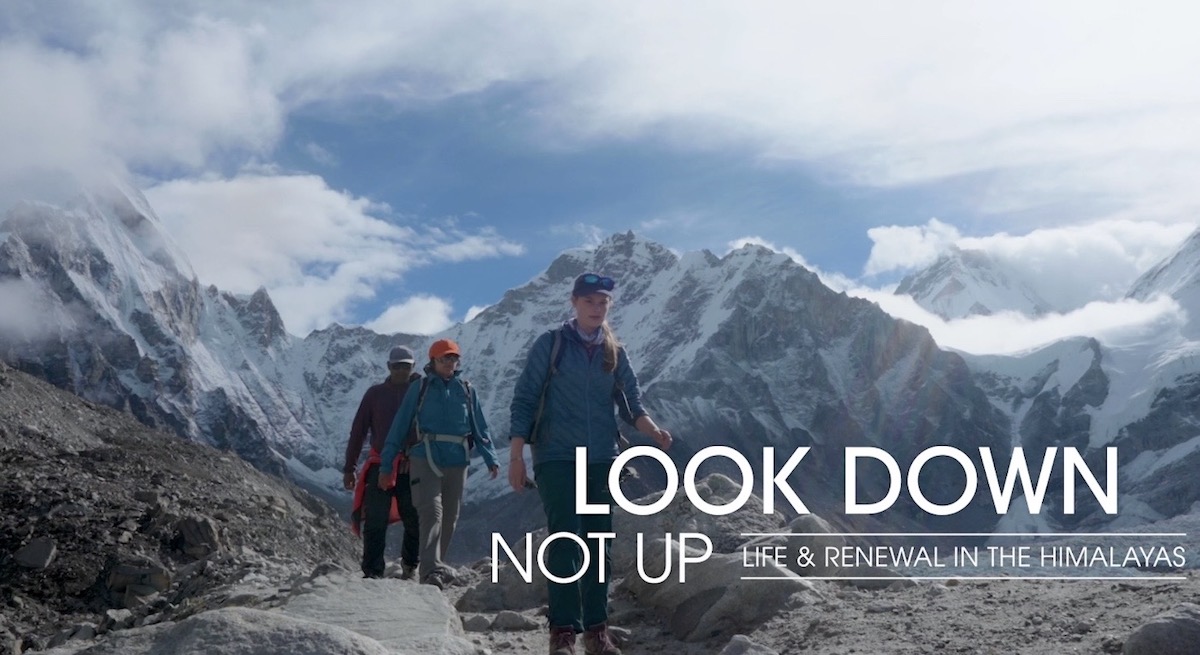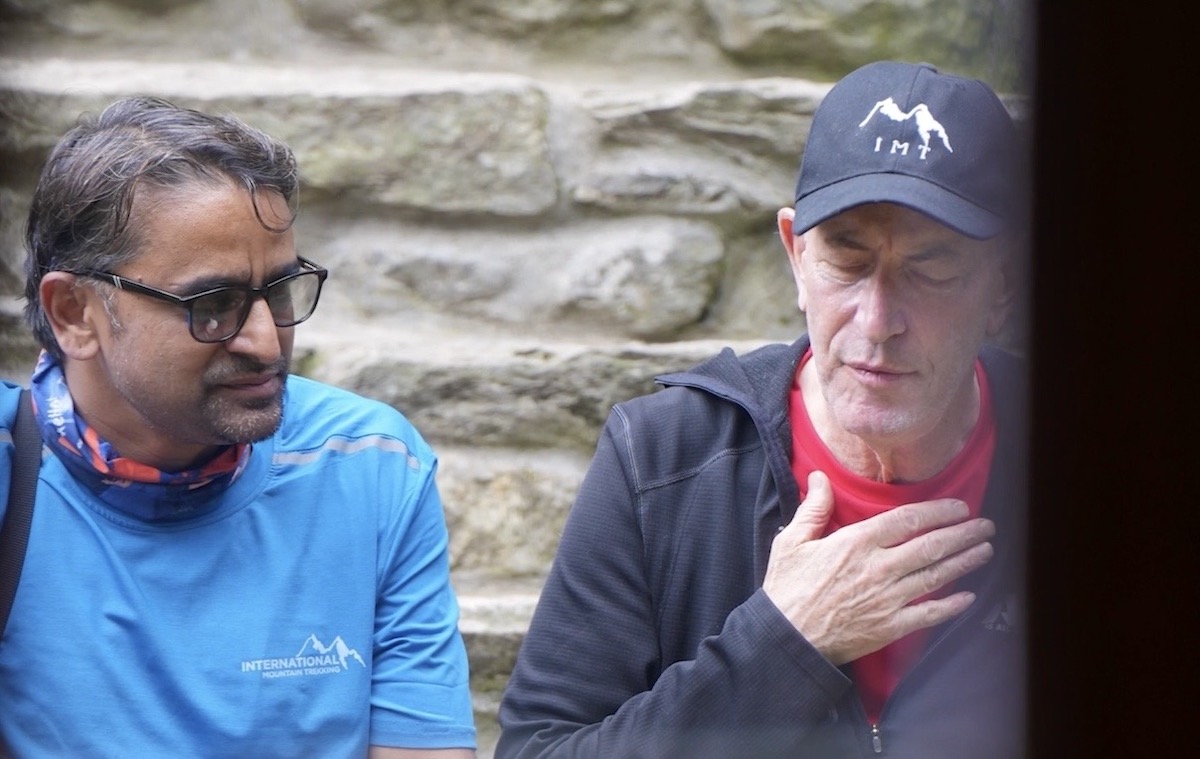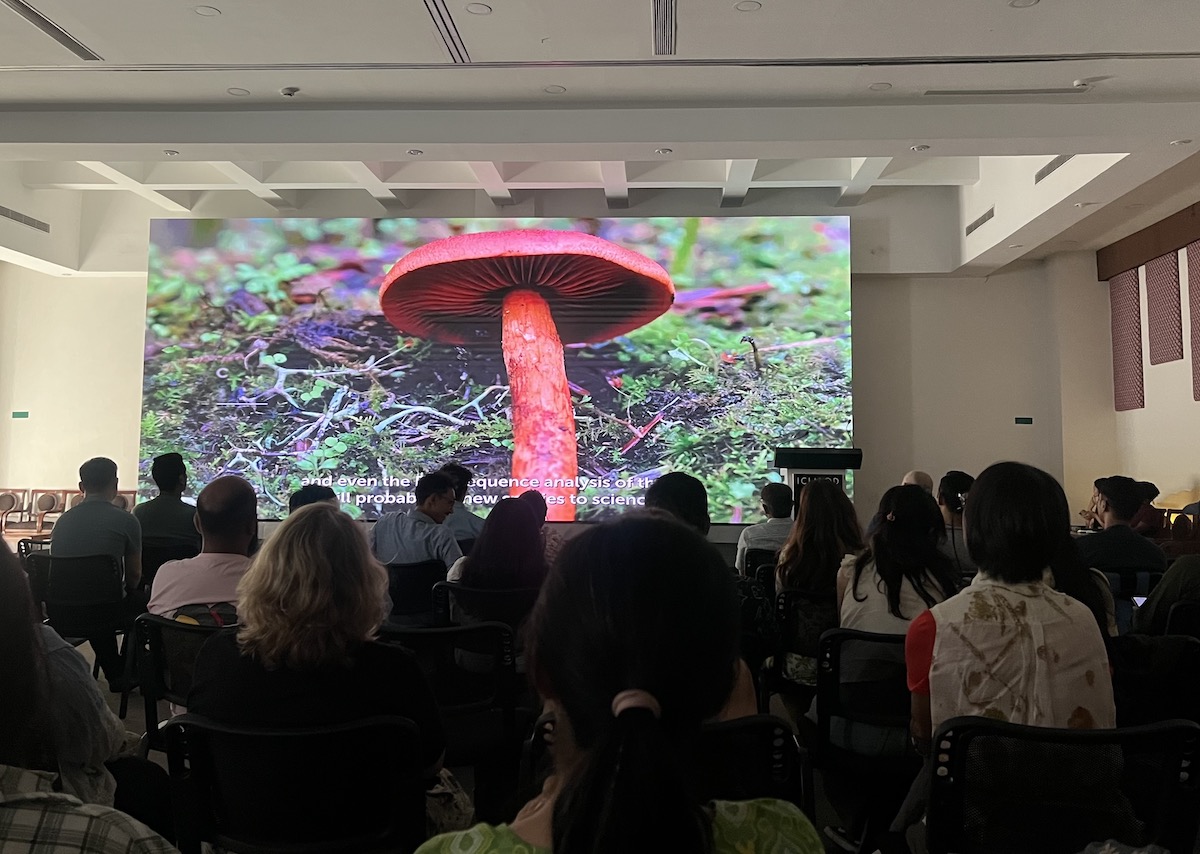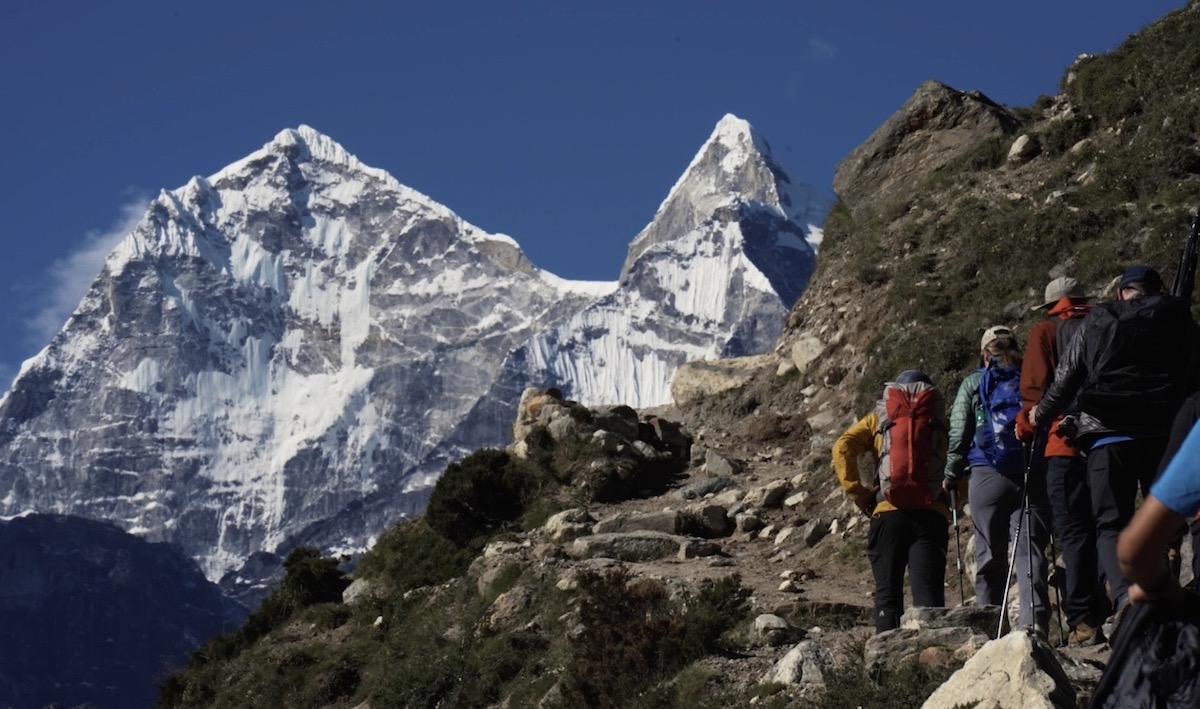I’ve been near the mountains a few times—played in the snow, taken photos with the majestic peaks in the background.
But after watching “Look Down Not Up,” a film by Alok Siddhi Tuladhar, I no longer want to just capture pictures near the mountains. Now, I want to go trekking to observe the mushrooms growing quietly on the ground.
What kind of mushrooms might be found along the trail? How many could there be? What colors and patterns might they have?
I’m eager and excited to see them all.
One of the most beautiful and powerful aspects of this film is how it teaches mountain trekkers to observe not only the towering peaks that seem to touch the sky, but also the tiny mushrooms and plants embedded in the soil below.
The film’s title, “Look Down Not Up,” says it all.
The film centers on a trek conducted in the Khumbu region from June 19 to July 2, 2022.

The journey included mycologist Shiva Devkota, Dr Britt Bunyard of Clark University, Thomas Roehl, Rick Silber – the executive director of International Mountain Trekking – Sherpa guides from Nepal, and scientists from the United States and Mexico.
During their trek from Salleri in Solukhumbu to Everest Base Camp, they discovered 156 species of mushrooms. Along the way, they also educated locals about poisonous mushrooms.
The film shows that even some locals aren’t sure which mushrooms are safe to eat. In one scene, a local woman says, "If livestock get dizzy after eating a mushroom, we don’t eat it. If they’re fine, we assume it’s edible."
The film features interviews with locals, mycologists, and environmentalists about mushrooms and tourism. They share insights into mushroom species and their value for tourism.
It also showcases visuals from Kathmandu to Everest Base Camp and other parts of eastern Nepal, offering glimpses into the region’s socio-cultural life.
Most importantly, the film highlights the significance of mushrooms.

According to Rick Silber, who is also the film’s executive producer, mushrooms are gaining global attention. They are highly nutritious and are being used in treatments for heart and liver diseases.
Scientific research has shown their benefits for mental health as well.
“There are even studies now exploring how mushrooms could help decompose plastic faster,” Silber said.
Silber first came to Nepal in 2016. His company, International Mountain Trekking, Inc, provides guidance and creates a welcoming environment for Everest region trekkers.
After several trips, he began to feel the urge to do something more meaningful. As a member of the board of the directors at the Mycological Association in Washington, USA, Silber is part of a large network of mushroom researchers, enthusiasts, and healthcare professionals.
Having seen over 200 mushroom-focused clubs in the US, Silber was surprised that Nepal didn’t have any. He believed that promoting mushrooms in Nepal could benefit both tourism and local communities.
“Most people come to the Khumbu region to climb mountains. If more people started trekking to see mushrooms, it could really boost the income of Sherpa communities,” he said.
It was around this time that Silber met mushroom expert Shiva Devkota and proposed a mushroom-themed trek. Devkota, who was already deeply involved in mushroom research, happily agreed.

Born and raised in Pokhara, Devkota had been fascinated by colorful mushrooms since childhood. While doing his MSc in 2005, he focused his thesis on mushrooms. During his research, he found it difficult to identify the various mushrooms he collected, as there were very few people who could help.
This challenge only deepened his interest in mushrooms.
“There were only one or two teachers who could identify mushrooms. That made me realize how little knowledge existed in this field, and I decided to dedicate myself to it,” Devkota said. “Even when I earned my PhD in Switzerland in 2009, it was in this same subject. After returning to Nepal, I continued working in this area.”
A 2022 research paper co-authored by Devkota documented 1,292 mushroom species in Nepal. He estimates that the actual number could be around 2,000. He even recorded mushroom species at an altitude of 5,123 meters.
Globally, research is being done on the environmental and health benefits of mushrooms. But in Nepal, studies are mostly limited to taxonomy—identifying species.
Devkota points out that many people die each year due to the inability to distinguish between edible and poisonous mushrooms. Devkota says raising public knowledge is now a critical need.
Devkota feels there’s a lot more to be done in promoting mushroom tourism. When Silber, a foreigner, said he wanted to play a role in that, Devkota felt he had found someone who shared his vision.
“In Nepal, tourism based on wildlife—like tigers, rhinos, and birds—has been around for years. I always wondered why people wouldn’t come to see mushrooms too. When Rick shared a similar vision, we instantly clicked and began working together,” Devkota said.
For the Khumbu expedition, Silber brought along not only Devkota but also American university professors, medical professionals, and the editor of Fungi magazine.
Devkota said the idea of making a film emerged during the planning phase of the trip.
“We made this film with the intention that more people would learn about mushrooms and that our message would be effectively communicated,” said Silber.

The film was screened at the International Centre for Integrated Mountain Development (ICIMOD) in Lalitpur, as part of its “Living Mountain Lab” program.
Sarala Khaling, head of Resilient Economies and Landscape at ICIMOD, said the film reveals the human connection with nature and supports safe, sustainable living.
“Mushrooms are important, yet understudied,” she said. “This film not only highlights their importance but also sparks curiosity about local communities and indigenous knowledge.”
According to her, ICIMOD is also providing training in the mushroom sector. She is hopeful this will improve local livelihoods and food systems.
The film's title, “Look Up Not Down,” is inspired by a book of the same name by Karna Shakya.
This film certainly sparks interest in mushrooms and holds promise for mushroom tourism as well.
The film’s creators are hopeful that mountain trekkers will now not only look up at the tall peaks, but also look down at the mushrooms growing below—and maybe even take pictures of them.
So next time you go trekking, don’t just look up—make sure to look down too!

